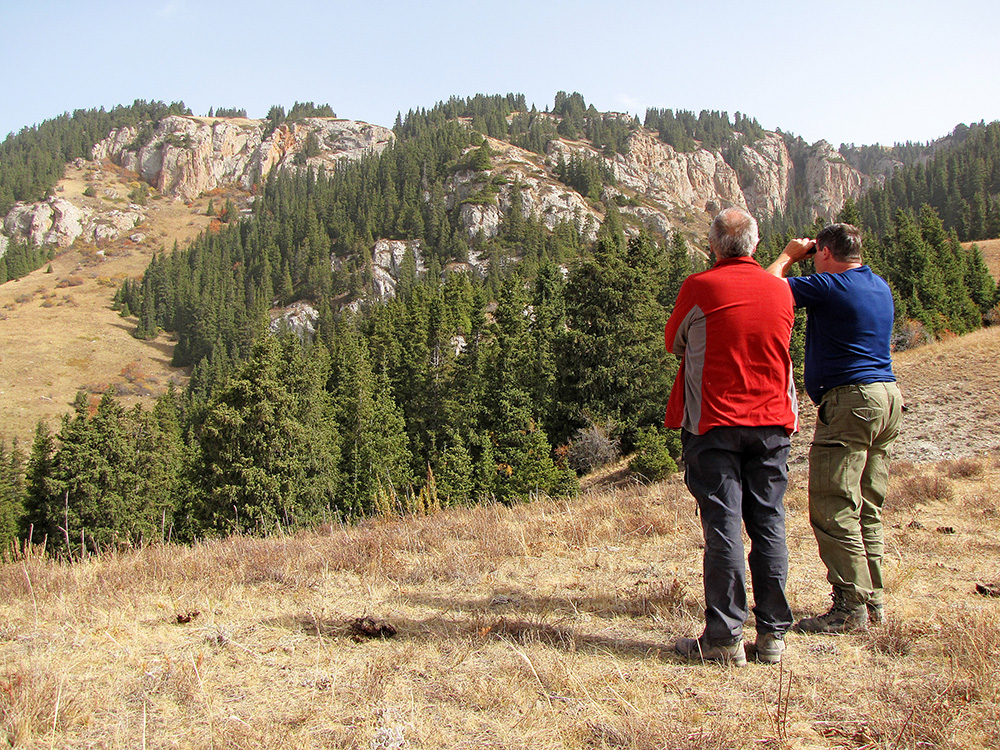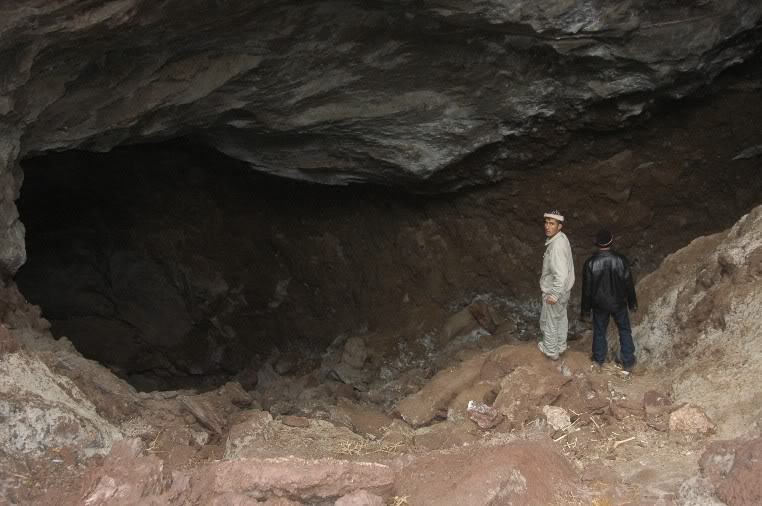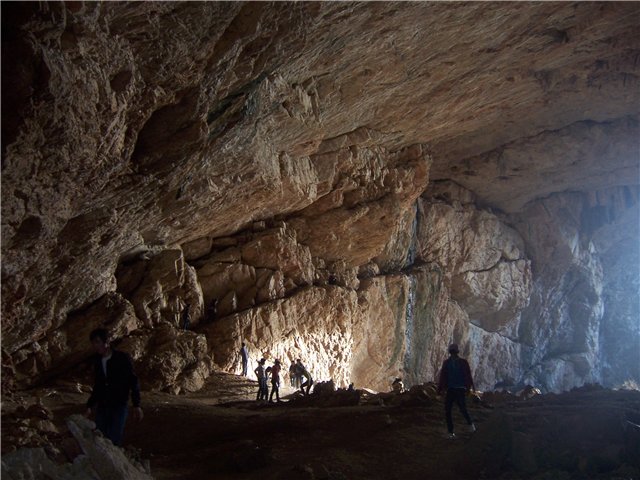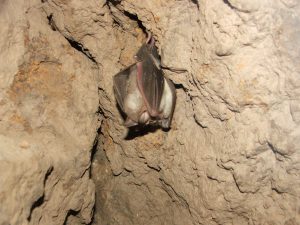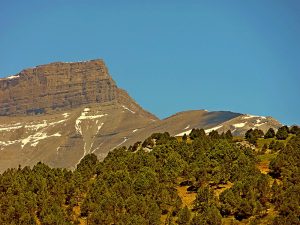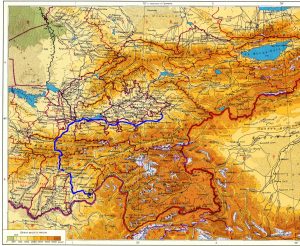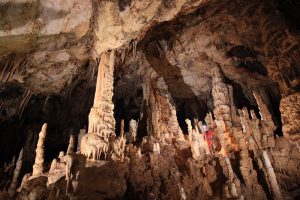
The internal drainage system of the Enilchek glacier has not been studied to date. One of the largest glaciers in Asia (over 65 km long) has a well-developed internal drainage system that extends from the ice stream to heights over 4000 m above sea level and has a length of tens of kilometers. The lower 14 km part of the drainage system is formed (or transformed) as a result of the action of powerful streams of thawed glacial water from Merzbacher Lake, which is completely emptied once a year. The drainage system is formed in the layer, where the bedrock contacts with the bottom of the glacier, and possibly in the glacial ice strata. The confluence of the drainage channels of the lake with the internal drainage system of the glacier leads to the formation of the world’s largest internal drainage system, an important role of which is belonged to the high-altitude lake of Merzbacher, located at an altitude of more than 3000 m above sea level.
Periodically, with the annual inrush of the lake, a new drainage system is formed, which is partially confined to the main internal drain of the glacier. This part of the drainage system also continually expands and changes. Due to continuous dynamic processes occurring in the glacial strata during the spring, summer and autumn periods, take shape and expand new drainage channels, and in winter time they disintegrated, crumbled, overgrown by newly formed ice strata and compressed by ice deformation. This cycle occurs annually, invariably repeating.

The main part of the drainage channels is confined to the so-called transit zone of water flows inside the glacier. In the lower part of this system, takes place the main discharge of water from the lake. To this zone belongs the glacial landscape with numerous funnel-sinks, ponoras, cracks and lake basins that differs from the rest of the glacier as well.
In the lower part of the glacier, the discharge of the water flow drains the entire system of internal drainage of the glacier.During the inrush of the lake, a significant part of the water in the ice stream is drained from Lake Merzbacher.
Theoretically, the channels emerged at the contact of the glacier with the bedrock, and also in the ice on the glacier section below the lake, should be more washed out by water streams than those parts of the channels located above the lake. The length of the drainage system can be estimated in tens of kilometers. Such a large-scale internal drainage system in an active mountain glacier has not been explored yet. Therefore, if such a drainage system could be tracked for a considerable length, it could help to clarify many aspects in the matter of formation of such drainage systems not only on this glacier, but in other glaciers on the Earth as well.
The entrance to the internal glacier drainage system is possible through numerous glacial wells, abundantly found on its surface (but mainly above the lake), as well as the water outlet portal in the ice stream of the glacier. It is also possible to detect the entrance to the system of internal canals through glacial caves that are located below the lake, especially in places where the glacier joins with lateral water currents and glacial tributaries. To get into the drainage system through the lake Merzbacher seems unlikely, since after the inrush of the lake all the channels that existed before are likely to completely collapse.
In our opinion, this project has two different and at the same time very similar and mutually conditioned motivations: First, very high scientific and applied significance of the results obtained during risky studies within the glacier makes the event scientifically- applied;
secondly, without the organized and rather complex support of from extreme athlete, the accomplishment of the first motivation becomes impossible.
